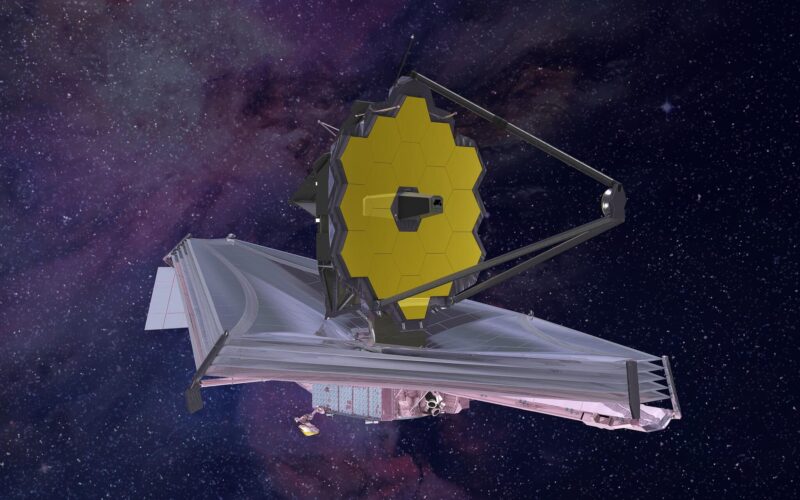The NASA James Webb Telescope has marked off more milestones as it moves towards being able to carry out scientific observations.
On January 4, 2022 the telescope’s 70-foot (21.3 meters) sunshield was deployed, which NASA described as its most complex procedure, while its secondary mirror support structure was deployed a day later, on January 5.
The steps are all part of a near six-month deployment process for the world’s largest and most powerful space telescope, which was launched into space on December 25, 2021.
Deployment of the sunshield, which is the size of a tennis court, started on December 28, 2021. The five-layered sunshield was folded to fit inside the payload area of an Arianespace Ariane 5 rocket’s nose cone prior to launch and had to be precisely unfurled. Each plastic sheet of the sunshield is as thin as a human hair and provides protection of over SPF 1 million to keep Webb’s scientific instruments at temperatures of 40 kelvins (-380 Fahrenheit).
“Thousands of parts had to work with precision for this marvel of engineering to fully unfurl,” Gregory L. Robinson, Webb’s program director at NASA Headquarters, commented in a press release. “The team has accomplished an audacious feat with the complexity of this deployment – one of the boldest undertakings yet for Webb.”
Sorry for the shade, @NASASun, @NASAMoon & @NASAEarth! But you’re just not cool enough
— NASA Webb Telescope (@NASAWebb) January 5, 2022
Now fully deployed, our sunshield blocks your heat & light so that our mirrors will be able to detect faint heat signals in the universe: https://t.co/mggJkh6swO #UnfoldTheUniverse pic.twitter.com/qipAh45n6o
The Webb telescope, 100 times more powerful than the Hubble telescope, is an international partnership with the European Space Agency and the Canadian Space Agency. NASA says it will explore every phase of cosmic history, helping humanity to understand the origins of the universe.
The next milestone was the secondary mirror support structure, which NASA said was a bit like deploying a tripod.
When light hits the 18 gold primary mirrors, it will reflect and hit the smaller secondary mirror, which in turn directs light into the telescope’s instruments. The mirror is supported by three 25-foot (7.6 meter) long struts.
“Webb’s secondary mirror had to deploy in microgravity, and in extremely cold temperatures, and it ultimately had to work the first time without error,” Lee Feinberg, optical telescope element manager for Webb at NASA’s Goddard Institute, commented in a blog post. “It also had to deploy, position, and lock itself into place to a tolerance of about one and a half millimeters, and then it has to stay extremely stable while the telescope points to different places in the sky.”
The Webb telescope has another 5.5 months of set-up to go, after which time it will be able to start sending the first images back to Earth. The next step for the telescope is to deploy a radiator system, which helps shed heat away from its instruments and mirrors.

